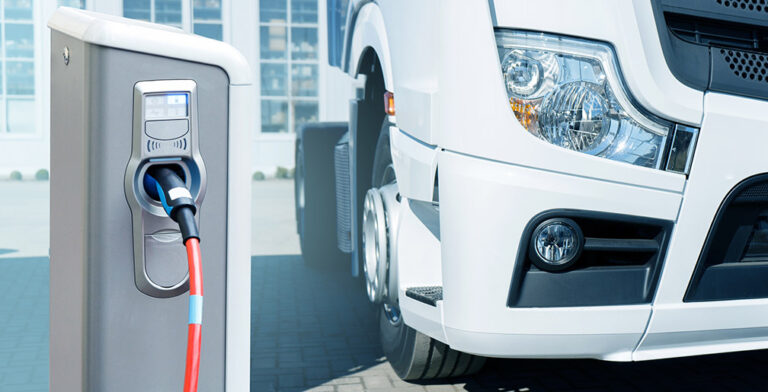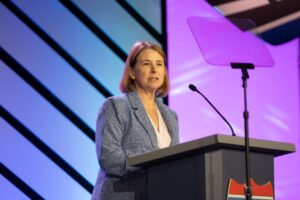WASHINGTON — The U.S. Department of Transportation’s Federal Highway Administration (FHWA) has announced a new program that unlocks $6.4 billion in formula funding for states and localities over five years that includes adding electric charging stations at truck stops.
The new Carbon Reduction Program (CRP), created under the President Biden’s Bipartisan Infrastructure Law, “will help states develop carbon reduction strategies and address the climate crisis facing our nation,” according to a news release.
“As the sector generating the most carbon emissions in the U.S. economy, transportation must play a leading role in solving the climate crisis,” said U.S. Transportation Secretary Pete Buttigieg. “The Carbon Reduction Program will help reduce pollution from transportation and move us closer to the President’s ambitious goal of cutting emissions in half by 2030.”
The CRP will fund a wide range of projects designed to reduce carbon dioxide emissions from on-road highway sources — from installing infrastructure to support the electrification of freight vehicles or personal cars, to constructing Bus Rapid Transit corridors, to facilitating micro-mobility and biking.
Under the CRP, states must also develop carbon reduction strategies in consultation with Metropolitan Planning Organizations to identify projects and strategies tailored to reduce carbon dioxide emissions in their states, although states and localities may begin using the CRP funds even before plans are developed and reviewed.
“This new program provides states and local agencies in both urban and rural areas the flexibility and funding needed to reduce emissions and build a more sustainable transportation network that will benefit all travelers,” said Deputy Federal Highway Administrator Stephanie Pollack. “The Bipartisan Infrastructure Law makes transformative investments in our nation’s transportation infrastructure, and this is one of the key programs that will help address the climate crisis.”
Eligible projects include on- and off-road trail facilities for pedestrians, bicyclists and other nonmotorized forms of transportation and projects that support the deployment of alternative fuel vehicles. These types of projects, which are determined at the state and local level but could be supported with federal funding, include zero emission vehicles and facilities, projects that support congestion pricing and travel demand strategies; truck stop and port electrification systems to reduce the environmental impacts of freight movement and carbon dioxide emissions at port facilities; and public transportation projects such as the construction of bus rapid transit corridors or dedicated bus lanes. Micro-mobility and electric bike projects, including charging infrastructure, may also be eligible.
A growing number of companies with fleets of big rigs are already purchasing electric tractors, with Pepsi Co. and J.B. Hunt among them.
FHWA previously announced state-by-state totals, which included funding for the CRP. In total, the U.S. Department of Transportation has sent $52.5 billion to states for Fiscal Year 2022 for Federal-aid Highway Program apportionments, which is determined by a formula set by Congress.
For more information about the new Carbon Reduction Program and guidance, visit FHWA’s web site and fact sheet. The five-year funding table for total estimated CRP state-by-state funding for Fiscal Years 2022-2026 is available here.
The Trucker News Staff produces engaging content for not only TheTrucker.com, but also The Trucker Newspaper, which has been serving the trucking industry for more than 30 years. With a focus on drivers, the Trucker News Staff aims to provide relevant, objective content pertaining to the trucking segment of the transportation industry. The Trucker News Staff is based in Little Rock, Arkansas.









Pretty fast and loose with
“Bipartisan “
How long does a charge last? How many miles from one? Can only one charge be given at a time? Is this even workable?
I think we got a lot of dreamers out there including Biden. And is he leading the way with electric government vehicles?
I can see it now, evert body plugs in their truck at the same time and the whole electrical grid east of the Mississippi goes down
STUPID GLOBAL WARMING ACTIVISTS AND POLITICIANS